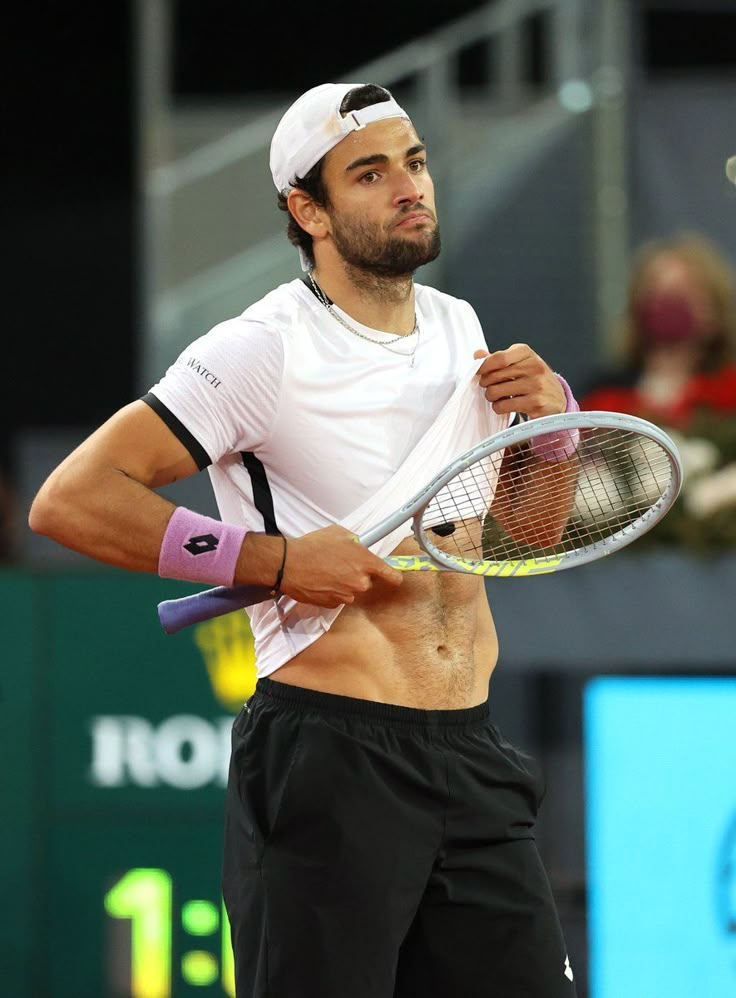Introduction: The Price of Expectation in Professional Tennis

In the world of professional tennis, talent alone isn’t enough — expectations, media pressure, and constant comparisons often shape an athlete’s trajectory as much as their own skills. Few players have felt this more deeply than Spanish tennis star Paula Badosa. In a startling and emotional revelation, Badosa admitted that early comparisons with Russian legend Maria Sharapova once made her “delusional” about her own career, goals, and self-worth.
This candid confession not only provides a rare glimpse into the psychological burden young athletes face but also prompts an urgent conversation around media narratives, identity crises, and mental health in women’s tennis. In this in-depth blog post, we’ll unpack Paula Badosa’s powerful statement, explore how Sharapova comparisons shaped her mindset, and what every young athlete, coach, and fan can learn from her experience.
Section 1: Who Is Paula Badosa? Why the Buzz Around Her?
Born in 1997 in New York but raised in Spain, Paula Badosa emerged on the tennis scene with striking talent and early victories. After winning the 2015 French Open junior title, expectations soared. With her tall frame, blonde hair, aggressive playstyle, and fierce on-court presence, Badosa drew immediate comparisons to Maria Sharapova, a five-time Grand Slam champion and global sports icon.
Keywords at Play: Paula Badosa, Maria Sharapova comparison, rising tennis stars, pressure in sports
While flattering at first, these comparisons became an emotional anchor, distorting her expectations and damaging her mental clarity — something she now openly discusses.
Section 2: What Exactly Did Paula Badosa Say?
In a recent interview, Badosa confessed:
“When I was 17, they started comparing me to Maria Sharapova. I looked a little like her, I played aggressive, and I had a strong personality. But it made me delusional. I thought I had to win a Slam at 20, be world No.1 in two years… and when I didn’t, I thought I was a failure.”
Her words highlight the toxic influence of premature praise and unrealistic expectations. Instead of focusing on steady growth, Badosa began chasing a timeline not her own, losing sight of her individual path.
Section 3: The Sharapova Effect — A Double-Edged Sword
Sharapova is one of the most marketable and successful players in tennis history. Naturally, being likened to her drew global media attention and lucrative sponsorship offers. But beneath the glitz, it created psychological chaos.
The Cost of Comparisons
- Unrealistic Benchmarks: Sharapova won Wimbledon at 17. Any delay in Badosa’s progress felt like failure in contrast.
- Loss of Identity: Trying to emulate Sharapova made Badosa suppress her own playing style and emotional rhythm.
- Burnout Risk: By 21, Badosa was dealing with anxiety, depression, and performance slumps, even considering quitting tennis altogether.
According to a 2019 study by the American Psychological Association, over 35% of elite athletes experience mental health crises directly linked to performance pressure and public comparisons.
Section 4: Frequently Asked Questions (FAQs)
1. Why was Paula Badosa compared to Maria Sharapova?
Both shared similar physical traits and playing styles — tall, aggressive baseline players with commanding on-court demeanors. The media picked up on the visual and technical resemblance and fueled a narrative of “the next Sharapova.”
2. How did those comparisons affect her tennis career?
They set impossible standards, distorting her personal goals and pushing her into a toxic mental loop of comparison and disappointment. She chased milestones instead of enjoying progress, leading to burnout and injuries.
3. Did Badosa ever take a break from tennis because of mental health?
Yes. Around 2018, Badosa hit a major low. She openly spoke about suffering from clinical depression and anxiety. This period marked a turning point in her self-discovery and healing journey.
4. How did she recover and return stronger?
She rebuilt her mindset through therapy, mindfulness, and support from her team. In 2021, she had her breakthrough year — reaching the quarterfinals at Roland Garros, winning Indian Wells, and breaking into the top 10.
5. What’s her advice for young athletes now?
Badosa urges rising stars to “not fall into the trap of comparisons”, warning that every career is unique and personal growth matters more than external validation.
Section 5: Breaking the Myth of the “Next Big Thing”
The media’s obsession with “the next [insert legend’s name]” harms both fans and athletes.
Power Words in Play: Pressure, Pitfall, Identity Crisis, Mental Collapse, Burnout
Such narratives:
- Reduce players to commodities, not individuals.
- Create fixed expectations at the cost of development.
- Overshadow unique journeys in favor of familiar stories.
Paula Badosa’s story is a case study in how premature hype can sabotage potential — not by discouragement, but by over-inflation.
Section 6: Key Statistics That Paint the Full Picture
- 80% of WTA players under 22 face direct media comparison to past legends, according to a 2022 Tennis.com report.
- 1 in 3 elite tennis players report feeling that public expectations harmed their confidence and focus (WTA Mental Health Survey, 2021).
- Injuries increased by 27% among top-100 women aged 19–24 between 2015–2021, often linked to overtraining spurred by pressure to “live up” to expectations.
These figures reinforce the urgent need for better athlete support systems and more responsible media behavior.
Section 7: What Can Be Done? Actionable Solutions
1. Media Literacy for Athletes
Training young players to filter media narratives and stay grounded in personal goals is essential. Mental health coaching should be standard at tennis academies.
2. Stronger Support Networks
Families, coaches, and agents must shield players from harmful narratives, focusing instead on long-term well-being and authenticity.
3. Public Awareness Campaigns
Organizations like WTA and ITF should lead campaigns around mental health, identity, and self-comparison traps — much like Badosa’s own example.
4. Responsible Journalism
Media outlets need to rethink the “next big thing” angle, shifting toward profiles that celebrate uniqueness, effort, and perseverance instead of mimicry.
Section 8: Paula Badosa’s Comeback — A Blueprint for Resilience
Far from being derailed, Badosa’s self-awareness became her comeback fuel.
By 2021, she:
- Claimed the Indian Wells Masters title.
- Climbed to World No. 2 in the WTA Race.
- Reestablished herself as a formidable mental and physical force.
Her journey is proof that vulnerability isn’t weakness — it’s strength in disguise. Rather than trying to become the next Sharapova, Badosa chose to become the first Paula Badosa.
Conclusion: The Real Power Is in Being Yourself
Paula Badosa’s honest reflection on her journey — from the trap of comparison to the liberation of self-acceptance — is a timely reminder of the human side of elite sports. Her message is clear and powerful: “Don’t let anyone write your story but you.”


